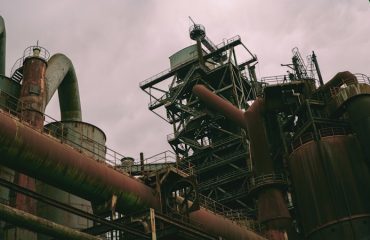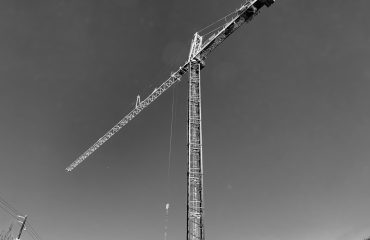Heavy load structures, from towering skyscrapers to robust bridges, demand exceptional strength and durability. High-strength steel (HSS) profiles have emerged as a crucial component in meeting these demanding requirements. This comprehensive guide explores the key aspects of utilizing HSS profiles for heavy load applications, encompassing design considerations, material selection, fabrication techniques, and common applications.
1. Understanding High-Strength Steel (HSS) and its Advantages
High-strength steel, characterized by its superior yield strength compared to conventional structural steel, offers significant advantages in heavy load applications. These advantages translate to lighter weight structures, reduced material costs, and improved efficiency. The higher yield strength allows for the use of smaller sections, leading to cost savings on material and transportation. Furthermore, HSS profiles often exhibit enhanced fatigue resistance, crucial for structures subjected to repeated cyclical loading. Different grades of HSS are available, each with specific yield strength and mechanical properties, allowing engineers to select the optimal material for a given project. Common grades include S355, S460, and S690, with higher numbers indicating increased yield strength. The choice of grade depends on factors like the required load capacity, environmental conditions, and fabrication methods.
2. Design Considerations for Heavy Load Structures using HSS Profiles
Designing with HSS profiles for heavy load structures requires meticulous consideration of several factors. Accurate load analysis is paramount, taking into account dead loads, live loads, wind loads, seismic loads, and other relevant forces. Finite element analysis (FEA) is often employed to simulate structural behavior under various loading conditions and ensure adequate safety margins. The selection of appropriate connection details is critical; HSS profiles may require specialized connection techniques to ensure sufficient strength and stiffness. Weld design, bolt design, and the use of high-strength fasteners are crucial aspects of ensuring the structural integrity of the connections. Buckling is a significant concern in slender HSS profiles, necessitating careful attention to the slenderness ratio and the use of bracing or stiffening elements to prevent instability. Furthermore, the effects of local buckling, which can occur in the compression flanges of HSS members, must be considered and addressed in the design process.
3. Material Selection and Grade Optimization for HSS Profiles
Choosing the right grade of HSS is crucial for optimizing structural performance and cost-effectiveness. Higher-strength grades offer advantages in terms of weight reduction and reduced section sizes, but they can also be more expensive and challenging to fabricate. The selection process involves a careful balance between strength requirements, cost considerations, and fabrication capabilities. Factors such as the anticipated service life of the structure, the environmental conditions (corrosion resistance), and the availability of specific grades in the local market should all be taken into account. Detailed material specifications should be included in the design documents to ensure the use of the appropriate HSS grade throughout the construction process. Proper quality control measures are also essential to verify the material properties and ensure compliance with relevant standards.
4. Fabrication Techniques for HSS Profiles in Heavy Load Applications
Fabricating HSS profiles for heavy load structures requires specialized techniques and equipment. The high strength of HSS necessitates the use of robust welding procedures to ensure sound and reliable connections. Welding processes such as submerged arc welding (SAW) and flux-cored arc welding (FCAW) are commonly employed due to their high deposition rates and ability to produce high-quality welds in thick sections. Proper weld preparation, preheating, and post-weld heat treatment (PWHT) may be necessary to mitigate residual stresses and ensure optimal weld integrity. Precise cutting and forming techniques are crucial to maintain the dimensional accuracy of the HSS profiles. High-precision CNC machining and laser cutting are often used to achieve the required tolerances. Quality control during fabrication is vital, incorporating non-destructive testing (NDT) methods such as ultrasonic testing (UT) and radiographic testing (RT) to verify the quality of welds and the overall structural integrity.
5. Common Applications of HSS Profiles in Heavy Load Structures
HSS profiles find widespread applications in various heavy load structures, including:
- High-rise buildings: HSS columns and beams contribute to the structural integrity and stability of tall buildings, offering superior strength-to-weight ratios.
- Bridges: HSS members are used in bridge girders, trusses, and other structural elements, providing high load-carrying capacity and durability.
- Offshore structures: The corrosion resistance and high strength of HSS make it suitable for use in offshore platforms and other marine structures.
- Industrial buildings: HSS profiles are utilized in heavy industrial structures, such as warehouses, factories, and power plants, where high load-bearing capacity is essential.
- Transmission towers: The strength and slenderness of HSS make it ideal for constructing tall transmission towers that need to withstand significant wind loads.
In conclusion, the strategic use of HSS profiles offers substantial advantages in the design and construction of heavy load structures. By carefully considering the design aspects, material selection, fabrication techniques, and ensuring strict quality control, engineers can leverage the superior strength and efficiency of HSS to create robust, cost-effective, and long-lasting structures.




